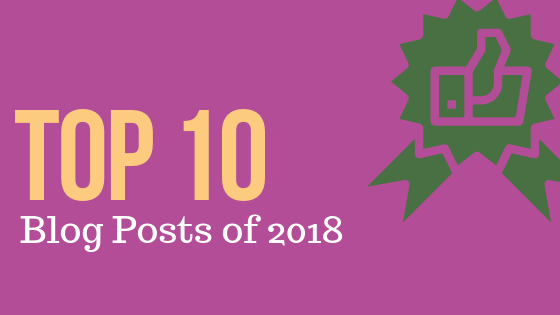As 2018 winds down, let’s celebrate all that’s happened in the world of ISHI this year! We converged on Phoenix, Arizona for the 29th annual International Symposium on Human Identification where we discussed new technologies, genetic genealogy, mixture interpretation, and testifying as an expert witness. We also heard Andrew Hessel present on the future of genomics.
Many of you also contributed stories to the ISHI blog this year! Scroll below to read the top ten posts from 2018 and subscribe to the blog at the end of the post to have future ISHI posts delivered to your email! We look forward to continuing to share actionable tips, new technologies, and announcements with you in 2019!
What is the Biggest Challenge Forensics Laboratories Face Today?
- We asked ISHI 28 speakers to share what they thought were the biggest challenges facing forensic laboratories today. Do you agree?
Effect of Automated Methods on Forensic DNA Workflow Management
- While highly satisfying for analysts, the case-ownership approach was not allowing us to keep up with the demands of our customers. We soon began reviewing our processes, identifying pinch-points, and exploring options that would achieve our goals to improve traceability, decrease quality incidents, increase productivity, standardize processes, and ultimately reduce the backlog and turnaround time.
By 2016 we were batching samples using a Hamilton AutoLys StarPLUS capable of fully automated lysis, substrate removal, purification, quantification assay set-up, normalization, and amplification set-up of up to 96 samples at a time. To support the Hamilton instrument, we designed a batching workflow where case processing responsibilities were divided into discrete functional groups (screeners, robotics team, report writers and reviewers). In 2017 we reviewed the goals we established at the beginning of the project to evaluate how the new automated workflow impacted our processes.
Under the Microscope with Jennifer Janetsky
- In 2016, Flint recruited Sex Crimes Specialist Jennifer Janetsky to help solve another problem the City of Flint had recently discovered: 1047 untested Sexual Assault Kits. We sat down with Jennifer and discussed what drew her to the role in Flint, how she and her team began to tackle the sexual assault backlog, and what it’s like to revisit cases that have gone cold with the victims.
Preparing as an Expert Witness for DNA Testimony in Today’s Courtroom
- In her workshop at ISHI 29, Rachel Oefelein, Quality Assurance Manager and Senior DNA Analyst at DNA Labs International (DLI), brought together a panel of experts who showed attendees practical ways to respond to specific questions received from prosecution and defense attorneys.
We recently interviewed Rachel, and she shared how she manages the stress of testifying, how probabilistic genotyping has changed the courtroom landscape, and one of her more unusual experiences as an expert witness.
High-Impact Leadership for Forensic Laboratory Professionals
- In his workshop at ISHI 29, John Collins, author of HR Management in the Forensic Science Laboratory: A 21st Century Approach to Effective Crime Lab Leadership, helped attendees thrive in their leadership role, and showed them how to build a culture in their lab that thrives in spite of scarce resources.
We recently interviewed John, and he shared why he chose to write his recent book, what challenges exist in a forensic science environment, the most important qualities of a good leader, and how a natural introvert can learn to be an “extroverted leader.”
Catalyzing Solutions with Synthetic Biology
- The keynote speaker for this year’s International Symposium on Human Identification (ISHI), Andrew Hessel, describes himself as a catalyst for big projects and ideas (1). In biology, catalysts are enzymes that alter the microenvironment and lower the energy of activation so that a chemical reaction that would proceed anyway happens at a much faster rate—making a reaction actually useful to the biological system in which it occurs.
In practical terms, Andrew Hessel is the person who helps us over our inertia. Instead of waiting for someone else, he sees a problem, gathers an interested group of people with diverse skills and perspectives, creates a microenvironment for these people to interact, and runs with them straight toward the problem. Boom. Reaction started.
Harder, Better, Faster, Stronger: The Petrous Bone as a Source of DNA for STR Typing and MPS Analysis
- While the typing success of the parietal, occipital and frontal portions are between 52% and 65%, temporal bones showed the highest success rate of approximately 90% [Edson et al., 2009]. Concomitantly, recent observations of scientists from the field of ancient DNA analysis confirmed these findings and showed that the petrous part of the temporal bone harbors high DNA amounts, even in specimens from the Neolithic period [Pinhasi et al., 2015, Gamba et al., 2014].
Building Mental Strength for Career Sustainability
- Last year, Amy Jeanguenat of Mindgen, LLC introduced us to mindfulness for forensic scientists. The workshop was so popular, that Amy has offered to return this year to share how to build mental strength to assist with the stress that working in a lab can bring. In this interview, Amy explains how practicing mindfulness can lengthen tenures for forensic scientists as well as provide coping mechanisms for everyday stress.
Under the Microscope with Walther Parson
- During his presentation at ISHI 29, Walther Parson, Associate Professor at the Institute of Legal Medicine at the Medical University of Innsbruck, described the developmental stages of the basic tools and provide preliminary experimental results from the VISAGE project.
We sat down with Walther and asked him how phenotyping can assist in providing and identity to perpetrators of crime, which traits scientists are currently able to predict, and what he feels is the future of phenotyping.
What Advice Would You Give to Someone Just Starting Out in Forensics?
- Maybe you’ve just graduated and are looking for your first job in forensics, or maybe you’re just starting work as an analyst. Either way, trying to find your footing can be tough. That’s why we’ve asked our ISHI 28 speakers to share some pearls of wisdom for those just starting out in the field of forensics. Do you have tips to add?
WOULD YOU LIKE TO SEE MORE ARTICLES LIKE THIS? SUBSCRIBE TO THE ISHI BLOG BELOW!
SUBSCRIBE NOW!


